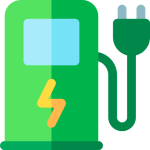
The dual-cab utility, or ‘ute’ as it is known across Australia, is more than just a vehicle; it is the beating heart of the nation’s commercial and recreational landscape. It dominates the sales charts, acts as the ultimate multi-tool for the weekend warrior, and is the essential mobile office for millions of tradies. For the electric vehicle revolution to truly take hold, it must conquer this critical utility segment.
The question is no longer if an electrified ute will arrive, but which one will first successfully tap into the demanding psyche of the Australian buyer. The battle for the workhorse crown is heating up, led by two aggressive Chinese brands: BYD with its plug-in hybrid (PHEV) Shark and LDV with the fully-electric eTerron 9 (a likely name for the Maxus eTerron in Australia). Their offerings represent two distinct electrification paths, each with specific strengths and weaknesses when measured against the local benchmark of the diesel Ford Ranger and Toyota HiLux.
The Challenger: BYD Shark – The Plug-in Pioneer
BYD has made a bold statement by not launching with a pure EV ute, but a highly capable Plug-in Hybrid.1 Recognising the range anxiety and lack of regional charging infrastructure, the PHEV approach serves as a necessary bridge for the working segment.
Key Specifications and Appeal:
| Feature | BYD Shark (PHEV) | Analysis for Tradies |
| Anticipated Launch Date | Orders commenced late 2024, deliveries from early 2025. | Already here. First-mover advantage in the PHEV ute segment. |
| Expected Pricing | Introductory Price: $\approx \$57,990$ before on-roads. | Extremely competitive. Significantly undercuts comparable mid-spec diesel 4x4s like the Ranger XLT and HiLux SR5. |
| Pure Electric Range | $\approx 80-100\text{km (WLTP/NEDC)}$ | The game-changer. Covers the vast majority of a tradie’s daily local travel (e.g., site to site, home to work) with zero-emissions, saving on fuel. |
| Combined Range | $\approx 800\text{km}$ | Eliminates range anxiety entirely. The petrol engine ensures long-haul reliability for regional jobs or extended towing trips. |
| Towing Capacity (Braked) | $2,500\text{kg}$ | The only major compromise. This is $1,000\text{kg}$ less than the $3,500\text{kg}$ segment benchmark, potentially ruling out some heavy-duty contractors. |
| System Outputs | $321\text{kW} / 650\text{Nm}$ | Class-leading power. This delivers a supercar-like $0-100\text{km/h}$ time of $5.7$ seconds, giving it unmatched straight-line performance. |
The BYD Shark’s entire pitch rests on its ability to offer electric-only daily running costs combined with a competitive upfront price and superior power. For a small business owner, the financial savings on fuel, especially given the $80-100\text{km}$ electric range, are a powerful incentive. The $2,500\text{kg}$ towing limit, however, will be the decisive factor that either breaks or makes its success among buyers who tow large boats, caravans, or heavy plant equipment.
The Contender: LDV Maxus (eTerron 9) – The Full EV Promise
LDV, having already dipped its toes into the electric ute market with the eT60—an expensive offering with limited range and towing—is set to correct its course with the formidable eTerron 9. This vehicle is designed to go head-to-head with the traditional diesel segment by achieving the golden standard of 2$3,500\text{kg}$ towing.3
Key Specifications and Appeal:
| Feature | LDV eTerron 9 (BEV) | Analysis for Tradies |
| Anticipated Launch Date | Unconfirmed, but expected mid-to-late 2025. | Likely to be beaten to market by the BYD Shark, but will be among the first full $4\text{x}4$ EV utes. |
| Expected Pricing | Unconfirmed, but expected to be significantly higher than the Shark, potentially $80,000$+ due to the large battery. | Pricing will be the biggest hurdle after the eT60’s poor sales. It must justify the premium over the PHEV Shark. |
| Pure Electric Range | $\approx 400\text{km}$ (WLTP) | A respectable all-electric range, which is sufficient for most daily travel but requires careful planning for long-distance regional trips. |
| Battery Capacity | $\approx 102\text{kWh}$ | The massive battery is key to achieving its towing goals, but contributes to its high expected price and kerb weight. |
| Towing Capacity (Braked) | $3,500\text{kg}$ | The market requirement. If LDV can deliver $3.5\text{t}$ towing in an all-electric $4\text{x}4$ ute, it immediately appeals to fleet managers and serious recreational users. |
| System Outputs (Top Spec) | $\approx 325\text{kW}$ (Dual-Motor AWD) | Plenty of power for acceleration and hauling, putting it on par with the Shark and current V6 diesel utes. |
The LDV eTerron 9 is aiming for the purity of a full EV with zero local emissions and silent operation, combined with the non-negotiable towing figure. Its biggest challenge will be two-fold: pricing and towing range. Towing a $3,500\text{kg}$ load will drastically reduce the $400\text{km}$ range, necessitating frequent, potentially slow, charging stops on long trips—a major friction point for the traditional ute driver.
🇦🇺 The Tradie’s Dilemma: PHEV vs. Pure EV
The success of these models hinges on which compromise the Australian buyer is willing to accept:
- The BYD Shark Compromise: The immediate future of the workhorse might be hybrid. Buyers trade the gold-standard $3,500\text{kg}$ towing capacity for low daily running costs, an affordable price, and zero range anxiety due to the petrol back-up. This suits city-based tradies, family buyers, and small business fleets who rarely tow heavy loads.
- The LDV eTerron 9 Compromise: The pure EV future is expensive and logistics-dependent. Buyers get the highly desired $3,500\text{kg}$ towing capacity but must accept a significantly higher purchase price and the logistical challenge of planning for the severe range penalty when actually towing. This is aimed at fleets and government bodies committed to decarbonisation, for whom 4$3.5\text{t}$ towing is non-negotiable.5
Ultimately, the Chinese invasion of the Australian ute market will not be won with a single strategy. The BYD Shark will disrupt the lifestyle and budget-conscious buyer with an unbeatable value proposition and zero daily fuel use. The LDV eTerron 9 will fight for the top-end fleet and heavy-duty user by delivering on the $3.5\text{t}$ towing benchmark, but will need its range and price to be competitive to succeed where the eT60 failed. The biggest winner, however, is the Australian consumer, who is finally receiving genuine choice in the most important vehicle segment in the country.
Frequently asked questions
How much range will a BEV ute lose when towing a 3,500 kg trailer?
Range loss varies with speed, gradient, trailer aerodynamics and ambient conditions. As a rule of thumb, expect a substantial reduction – commonly 30-60% depending on conditions. The higher the towing mass and speed, the greater the penalty. Always test with representative loads.
Is a PHEV ute like the BYD Shark a good interim solution for tradies?
Yes, for many urban and regional tradies a PHEV can be an excellent compromise. It offers meaningful electric-only driving for daily tasks while retaining the flexibility of a petrol engine for long trips or where chargers are unavailable.
Will BEV utes become cheaper over time?
Battery costs have been trending down, which supports lower BEV prices over time. However, large batteries and specialised chassis required for towing keep entry prices for heavy-duty BEV utes relatively high in the near term. Competition and scale should bring prices down over the next few years.
What should I look for in payload figures?
Check the kerb weight, Gross Vehicle Mass (GVM) and stated payload. Payload is what you can actually carry (tools, materials, passengers) after accounting for occupants and any fitted accessories. Batteries can reduce payload capacity, so verify real-world payload with your typical load.
Are charging networks adequate for tradies who travel regionally?
Charging networks have expanded substantially in recent years, but coverage is still uneven in remote areas. For regional work that involves towing, plan routes carefully and confirm charger availability and power levels along the way. Depot or home charging remains the most reliable option for many operators.
About EV Evolution
EV Evolution is the leading online platform dedicated to Australian electric vehicle owners and enthusiasts. We foster a vibrant community, delivering essential EV news and insights, and enhancing user engagement through our innovative, AI-powered chatbot for dynamic discussions. Our mission is to empower Australian electric vehicle owners and enthusiasts by fostering a vibrant, AI-driven online community that connects, informs, and advances the nation’s electric vehicle landscape.




